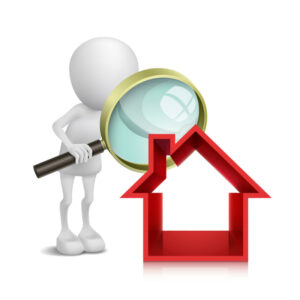When our chimney sweeps at Ace Chimney Sweeps became Chimney Safety Institute of America (CSIA)-certified, they had to pass an examination on the National Fire Prevention Association (NFPA) Standard Code 211, the standard for chimneys, fireplaces, vents, and solid fuel burning appliances. In this code, the NFPA developed three different levels of chimney inspections that all chimney sweeps who have been certified by the CSIA must strictly follow. The CSIA recommends an annual chimney sweeping and inspection, but which level of inspection does your chimney need? To explain the differences between these three levels, we would like to share with you an explanation of what happens during each chimney inspection level.
Level 1
The least complicated of the three levels, a Level 1 inspection will be performed if your appliance and your venting system have not changed and you are planning on using it as you normally have in the past. During this type of inspection, Ace Chimney Sweeps will inspect all of the readily accessible parts of your chimney’s exterior and interior as well as all accessible parts of your chimney’s connection to the appliance. Our chimney inspectors will check for structural soundness and proper installation and also verify that your chimney is free from blockages and combustible creosote deposits.
Level 2
A more involved examination is required by the NFPA when any change is made to your system. A Level 2 inspection looks closely at all of the changes in fuel type, the changes to the size and shape of your flue, and the changes to the heating appliance, such as when you have a fireplace insert installed. You will also receive a Level 2 inspection when you are selling or transferring your home and after building fires, chimney fires, earthquakes and tremors, and any weather-related event. Including everything performed in a Level 1 inspection, a Level 2 also examines the accessible parts to your chimney’s exterior and interior, including attics, crawl spaces, and basements. This level of inspection also addresses clearance from combustibles, which is a very important safety concern when a new heating appliance has been installed.
Level 3
When a Level 1 or 2 inspection reveals a hidden hazard that cannot be evaluated without special tools to access concealed areas of your chimney or flue, Ace Chimney Sweeps will recommend that we perform a Level 3 inspection, which is the most detailed of the three levels of inspection. When necessary, certain parts of the chimney must be removed for the evaluation to be complete. The parts that may need to be removed include the chimney crown or an interior wall of the chimney. This is only required when access is needed to areas that are subject to the inspection. Also, during a Level 1 or 2 inspection, if our chimney inspectors feel a serious hazard is present within your chimney or venting system, a Level 3 inspection may be required to examine the entire chimney or venting system.
Want to know more about the three levels of chimney inspection? Contact Ace Chimney Sweeps to get more detailed explanations about each level.

